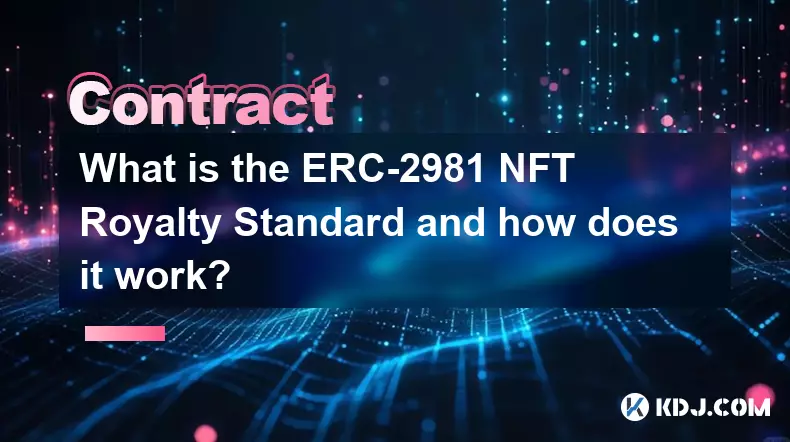-
 bitcoin
bitcoin $103128.103252 USD
-3.33% -
 ethereum
ethereum $3437.127692 USD
-4.86% -
 tether
tether $0.999700 USD
-0.02% -
 xrp
xrp $2.403993 USD
-5.73% -
 bnb
bnb $961.374676 USD
-4.11% -
 solana
solana $154.938665 USD
-8.18% -
 usd-coin
usd-coin $1.000113 USD
0.03% -
 tron
tron $0.298122 USD
0.30% -
 dogecoin
dogecoin $0.172428 USD
-5.76% -
 cardano
cardano $0.557625 USD
-7.13% -
 hyperliquid
hyperliquid $38.740701 USD
-6.51% -
 chainlink
chainlink $15.306051 USD
-7.51% -
 bitcoin-cash
bitcoin-cash $507.558648 USD
-3.26% -
 stellar
stellar $0.281899 USD
-6.74% -
 unus-sed-leo
unus-sed-leo $9.241811 USD
0.57%
What is the ABI (Application Binary Interface) and why is it necessary for contract interaction?
The ABI acts as a blueprint for interacting with smart contracts, enabling accurate function calls, event decoding, and seamless integration across dApps and tools.
Nov 12, 2025 at 10:20 pm

Understanding the Role of ABI in Smart Contracts
1. The Application Binary Interface (ABI) serves as a bridge between smart contracts and external applications on blockchain networks. It defines how data is encoded when calling functions within a contract or receiving responses from it. Without a properly structured ABI, interactions with deployed contracts would be impossible due to the lack of standardized communication protocols.
2. When a developer compiles a smart contract written in Solidity or another high-level language, the compiler generates both bytecode and an ABI. The bytecode is what gets deployed to the blockchain, while the ABI is a JSON-formatted description of the contract’s methods, parameters, return types, and event signatures. This enables off-chain tools like wallets, decentralized applications (dApps), and explorers to understand how to interact with the contract.
3. Each function call made to a smart contract must follow the ABI specification so that the Ethereum Virtual Machine (EVM) can decode the input correctly. For example, if a function expects two uint256 values, the ABI ensures these are serialized in a predictable way before being sent as part of a transaction. Similarly, when a function returns data, the ABI dictates how this output should be interpreted by the caller.
ABI Enables Accurate Function Calls and Data Parsing
1. In the absence of an ABI, users would have to manually encode every function call using raw hexadecimal strings, which is error-prone and inefficient. By providing a clear schema for each method, the ABI allows developers and interfaces to automatically generate correct calldata for transactions.
2. Wallets such as MetaMask rely heavily on ABIs to display readable function names and parameter fields when interacting with contracts. Instead of showing opaque hex data, they present users with intuitive forms where inputs can be entered in decimal or string format, which are then converted according to the ABI rules.
3. Decentralized exchanges (DEXs), lending platforms, and NFT marketplaces use ABIs to integrate with various token standards like ERC-20 and ERC-721. These standards define common function signatures, and their corresponding ABIs allow dApps to universally interact with compliant tokens regardless of deployment address.
4. Events emitted by smart contracts are also described in the ABI. Tools monitoring the blockchain for specific state changes—such as transfers, approvals, or auction completions—use the ABI to decode log entries and extract meaningful information from transaction receipts.
Security and Reliability Through Standardized Interfaces
1. A well-defined ABI reduces the risk of miscommunication between front-end interfaces and backend contracts. If a frontend attempts to call a non-existent function or passes incorrectly typed arguments, the EVM will revert the transaction, potentially leading to lost gas fees. The ABI acts as a safeguard by validating inputs before submission.
2. Third-party services that index blockchain data, such as The Graph or Alchemy, utilize ABIs to create subgraphs or queryable endpoints. They parse contract events and function outputs based on the ABI structure, enabling efficient retrieval of historical and real-time data without manual decoding.
3. During development, testing frameworks like Hardhat and Truffle use ABIs to simulate contract behavior in local environments. Developers can write scripts that invoke contract methods programmatically, relying on the ABI to ensure compatibility between test cases and actual deployment scenarios.
4. Open-source projects publish their contract ABIs to promote transparency and interoperability. Anyone can verify how a contract operates, audit its interface, or build complementary tools around it. This openness strengthens trust in decentralized systems where code is law.
Frequently Asked Questions
What happens if I use the wrong ABI to interact with a contract?Using an incorrect or outdated ABI may result in failed transactions or misinterpreted data. Function calls might target the wrong method due to mismatched selectors, or decoded outputs could appear corrupted if parameter types don't align.
Can a contract operate without exposing its ABI?Yes, a contract can function without publicly sharing its ABI, but this severely limits usability. External parties won’t be able to easily interact with it through standard tools, and integration into dApps becomes significantly more complex.
Is the ABI unique to Ethereum-based blockchains?No, while most commonly associated with Ethereum and EVM-compatible chains, the concept of an ABI exists in other blockchain ecosystems too. However, the format and implementation details vary across different virtual machines and consensus layers.
How do I obtain the ABI of a deployed contract?You can retrieve a contract's ABI from block explorers like Etherscan if the source code has been verified. Alternatively, during development, the ABI is generated alongside the bytecode when compiling with tools like solc, Hardhat, or Remix.
Disclaimer:info@kdj.com
The information provided is not trading advice. kdj.com does not assume any responsibility for any investments made based on the information provided in this article. Cryptocurrencies are highly volatile and it is highly recommended that you invest with caution after thorough research!
If you believe that the content used on this website infringes your copyright, please contact us immediately (info@kdj.com) and we will delete it promptly.
- Ripple, XRP, Warning: Navigating the Deepfake Crypto Scam Landscape
- 2025-11-13 08:50:01
- The US Mint, Pennies, and Circulation: End of an Era?
- 2025-11-13 08:45:01
- US Mint Penny Retirement: A New Era for American Coinage
- 2025-11-13 08:50:01
- Crypto Coins 2025: BlockDAG Leads the Charge with Scarcity and Speed
- 2025-11-13 07:25:01
- BlockDAG, Ethena, and Crypto Coins: Navigating the 2025 Landscape
- 2025-11-13 07:25:01
- Uniswap's UNI: Price Predictions, Recovery Hopes, and the $10 Target
- 2025-11-13 06:50:01
Related knowledge

What is a Denial of Service (DoS) attack in a smart contract and what are its common forms?
Nov 10,2025 at 05:20am
Understanding Denial of Service in Smart Contracts1. A Denial of Service (DoS) attack in the context of smart contracts refers to a scenario where a m...

What is a cryptographic nonce used for in transaction signing?
Nov 11,2025 at 05:59am
Understanding Cryptographic Nonces in Blockchain Transactions1. A cryptographic nonce is a random or pseudo-random number used only once in the contex...

How does inheritance work in Solidity smart contracts?
Nov 11,2025 at 10:40pm
Inheritance in Solidity: Building Modular Smart Contracts1. Inheritance in Solidity allows one contract to adopt the properties and functions of anoth...

What is the difference between an Externally Owned Account (EOA) and a Contract Account?
Nov 13,2025 at 04:00am
Understanding Externally Owned Accounts (EOA)1. An Externally Owned Account is controlled directly by a private key, which means only the holder of th...

What is the ERC-2981 NFT Royalty Standard and how does it work?
Nov 13,2025 at 05:39am
Understanding the ERC-2981 NFT Royalty Standard1. The ERC-2981 standard is a proposed Ethereum Request for Comment that introduces a royalty mechanism...

What is a Minimal Proxy Contract (EIP-1167) and how does it save gas on deployment?
Nov 12,2025 at 11:39am
What is a Minimal Proxy Contract (EIP-1167)?1. A Minimal Proxy Contract, standardized under Ethereum Improvement Proposal (EIP) 1167, is a lightweight...

What is a Denial of Service (DoS) attack in a smart contract and what are its common forms?
Nov 10,2025 at 05:20am
Understanding Denial of Service in Smart Contracts1. A Denial of Service (DoS) attack in the context of smart contracts refers to a scenario where a m...

What is a cryptographic nonce used for in transaction signing?
Nov 11,2025 at 05:59am
Understanding Cryptographic Nonces in Blockchain Transactions1. A cryptographic nonce is a random or pseudo-random number used only once in the contex...

How does inheritance work in Solidity smart contracts?
Nov 11,2025 at 10:40pm
Inheritance in Solidity: Building Modular Smart Contracts1. Inheritance in Solidity allows one contract to adopt the properties and functions of anoth...

What is the difference between an Externally Owned Account (EOA) and a Contract Account?
Nov 13,2025 at 04:00am
Understanding Externally Owned Accounts (EOA)1. An Externally Owned Account is controlled directly by a private key, which means only the holder of th...

What is the ERC-2981 NFT Royalty Standard and how does it work?
Nov 13,2025 at 05:39am
Understanding the ERC-2981 NFT Royalty Standard1. The ERC-2981 standard is a proposed Ethereum Request for Comment that introduces a royalty mechanism...

What is a Minimal Proxy Contract (EIP-1167) and how does it save gas on deployment?
Nov 12,2025 at 11:39am
What is a Minimal Proxy Contract (EIP-1167)?1. A Minimal Proxy Contract, standardized under Ethereum Improvement Proposal (EIP) 1167, is a lightweight...
See all articles










































































